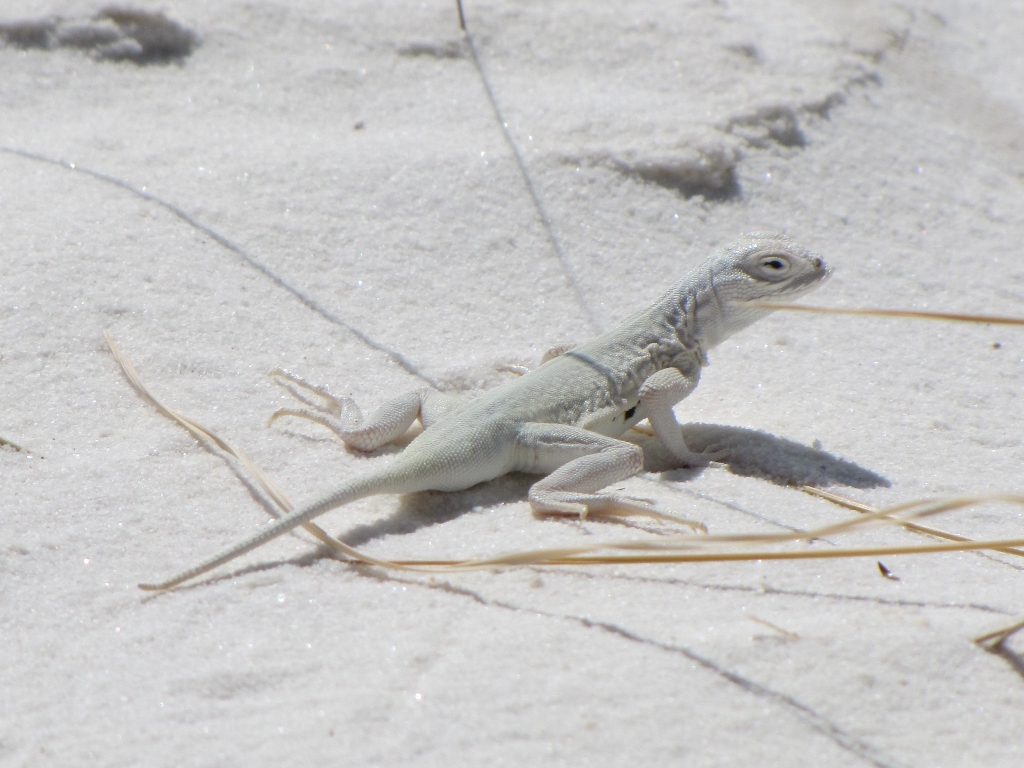
You are now at Interdune Boardwalk. On the signs detailing the trail, you will also see an overhead picture of the dunes. Imagine you are a bird of prey soaring over the dunes searching for a tasty snack in the form of a lizard or small rodent. As you look down on the endless waves of white dunes you might think that the dunefield is entirely barren other than the yuccas and rosemary mint dotting the landscape. However, darting in the interdune are small, white color adapted critters doing their best to go unseen. White Sands provides one of the best examples on earth of rapid adaptation to a unique environment. These white sand dunes have only been here for around 7,000 years and in such a short time the animals that call them home have shown remarkable adaptation to their environment. Unlike the surrounding desert, at White Sands it is survival of the lightest! Over generations, certain traits like color give animals an advantage in a given environment and pass on their advantageous traits to their descendants. Here you’ll find that being white color adapted not only helps an animal hide from predators, but it also keeps them cool in the scorching summers by reflecting sunlight away. The rapid change in habitat in the Tularosa Basin has led to an explosion of white, endemic species found nowhere else on earth. Just as isolated islands lead to unique, specialized species of animals, the unusual environment of the dunefield has led to lizards, moths, mammals, and even a species of fish that are found only at White Sands.
Is there something we missed for this itinerary?
Itineraries across USA

Acadia

Arches National Park

Badlands

Big Bend

Biscayne

Black Canyon Of The Gunnison

Bryce Canyon

Canyonlands

Capitol Reef

Carlsbad Caverns

Channel Islands

Congaree

Crater Lake

Cuyahoga Valley

Death Valley

Dry Tortugas

Everglades

Gateway Arch

Glacier

Grand Canyon

Grand Teton

Great Basin

Great Smoky Mountains

Guadalupe Mountains

Haleakalā

Hawaiʻi Volcanoes

Hot Springs

Indiana Dunes

Isle Royale

Joshua Tree

Kenai Fjords

Kobuk Valley

Lassen Volcanic

Mammoth Cave

Mesa Verde

Mount Rainier

North Cascades

Olympic

Petrified Forest

Pinnacles

Rocky Mountain

Saguaro

Shenandoah

Theodore Roosevelt

Virgin Islands

Voyageurs

White Sands

Wind Cave

Yellowstone

Yosemite

Zion